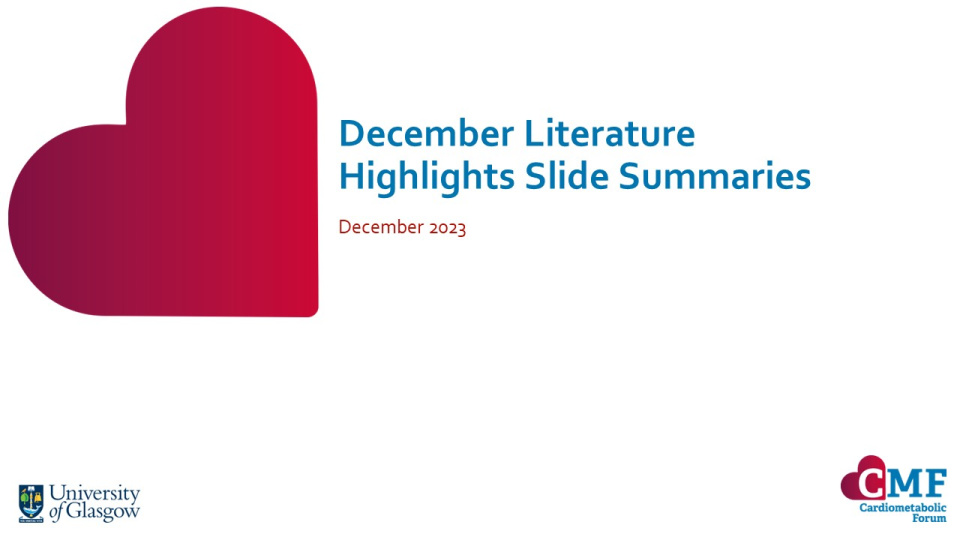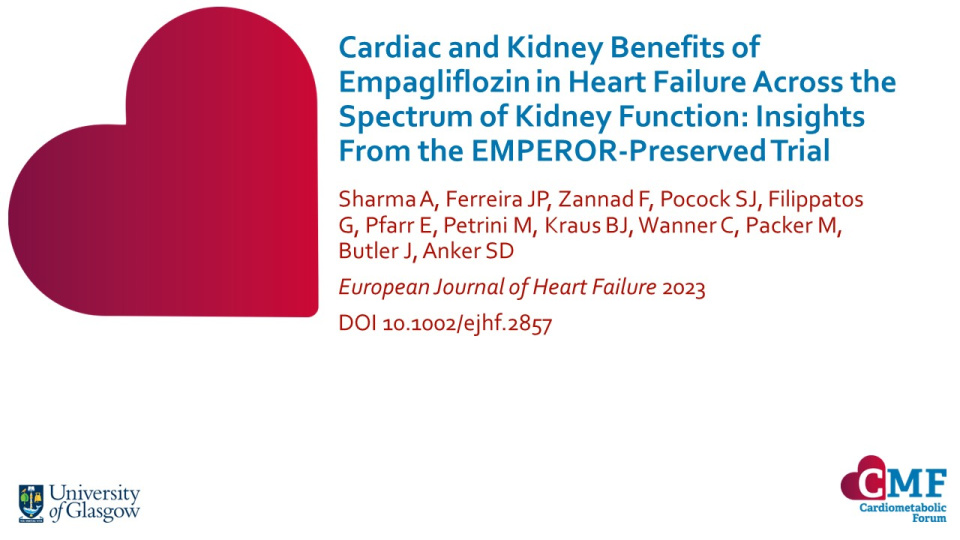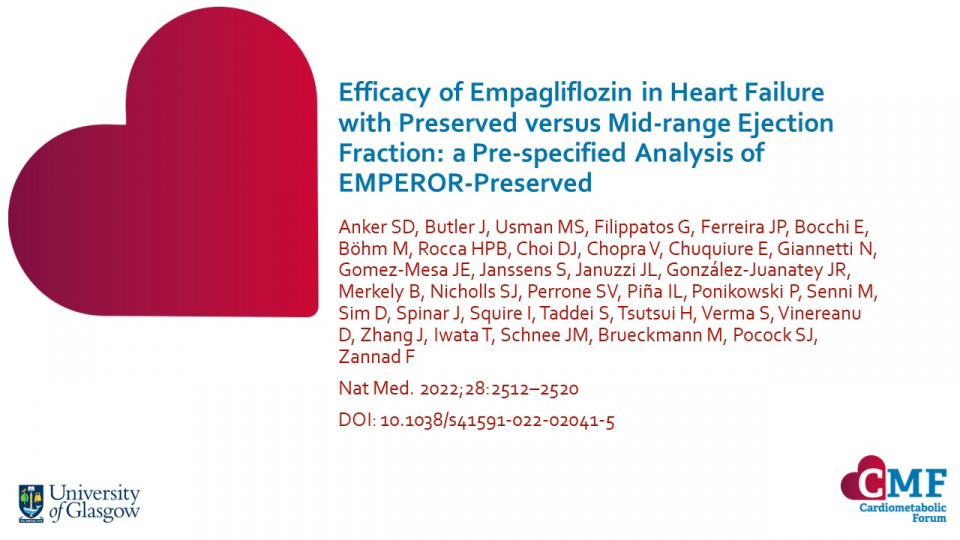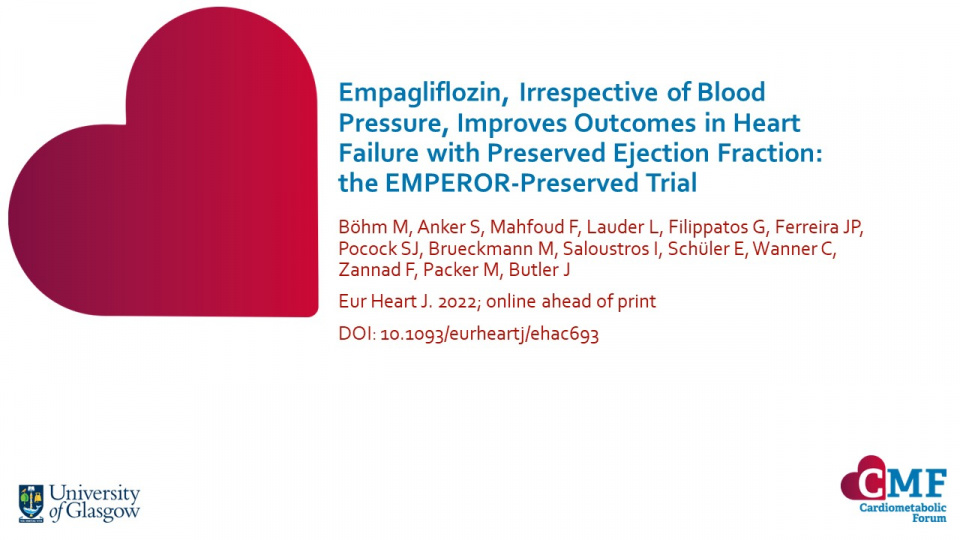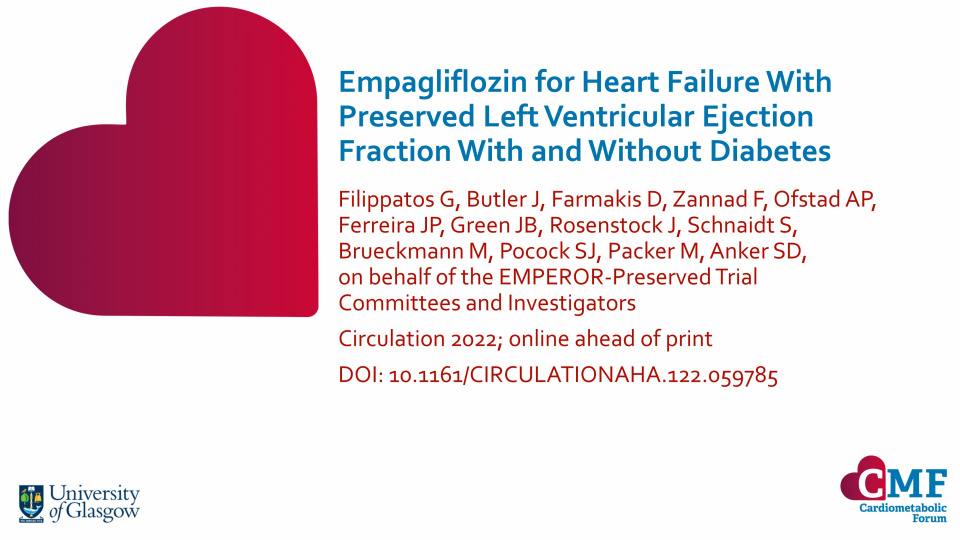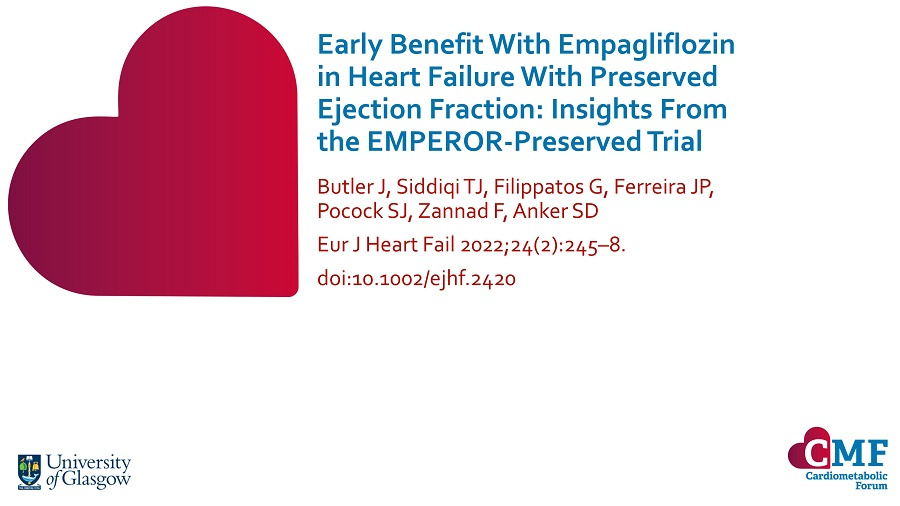Publications
Stay up to date with our literature reviews which are curated by experts to feature the most important publications released each month. Explore our publications for access to concise summary slides for your own use.
Cardiac and Kidney Benefits of Empagliflozin in Heart Failure Across the Spectrum of Kidney Function: Insights From the EMPEROR-Preserved Trial
European Journal of Heart Failure 2023 DOI 10.1002/ejhf.2857
In the EMPEROR-Preserved trial, empagliflozin was found to improve the clinical outcomes of patients with heart failure and preserved ejection fraction (HFpEF). This pre-specified analysis sought to explore the effect of empagliflozin on cardiovascular (CV) and kidney outcomes across different levels of kidney function.
Efficacy of Empagliflozin in Heart Failure with Preserved versus Mid-range Ejection Fraction: a Pre-specified Analysis of EMPEROR-Preserved
Nat Med. 2022;28:2512–2520 DOI: 10.1038/s41591-022-02041-5
Results from EMPEROR-Preserved demonstrated that empagliflozin improved CV death and HF hospitalisation – the primary outcome – in patients with HF and LVEF >40%. This pre-specified analysis of EMPEROR-Preserved aimed to evaluate the effect of empagliflozin in patients with HFpEF (LVEF ≥50%) compared with patients who had HFmrEF (LVEF 41–49%).
Keywords:
Empagliflozin, Irrespective of Blood Pressure, Improves Outcomes in Heart Failure with Preserved Ejection Fraction: the EMPEROR-Preserved Trial
Eur Heart J. 2022; online ahead of print DOI: 10.1093/eurheartj/ehac693
Results from EMPEROR-Preserved demonstrated that empagliflozin improved CV and renal outcomes in patients with HFpEF, but its efficacy and safety with baseline SBP is not well established.
Keywords:
Empagliflozin for Heart Failure With Preserved Left Ventricular Ejection Fraction With and Without Diabetes
Circulation 2022; online ahead of print
In patients enrolled in EMPEROR-Preserved, empagliflozin significantly reduced the risk of heart failure (HF) outcomes irrespective of diabetes status.
Keywords:
Early Benefit With Empagliflozin in Heart Failure With Preserved Ejection Fraction: Insights From the EMPEROR-Preserved Trial
Eur J Heart Fail 2022;24(2):245–8. doi:10.1002/ejhf.2420
Results reinforce sustained clinical, health status and quality of life benefits with empagliflozin in patients with HF‑pEF, and underscore the need for timely initiation of therapy.

